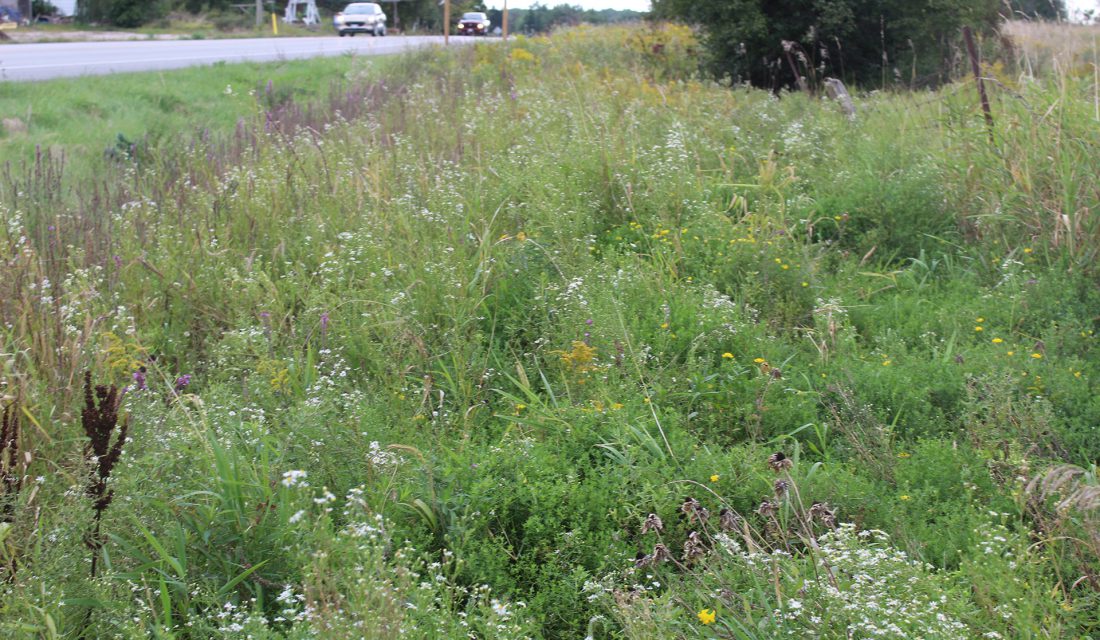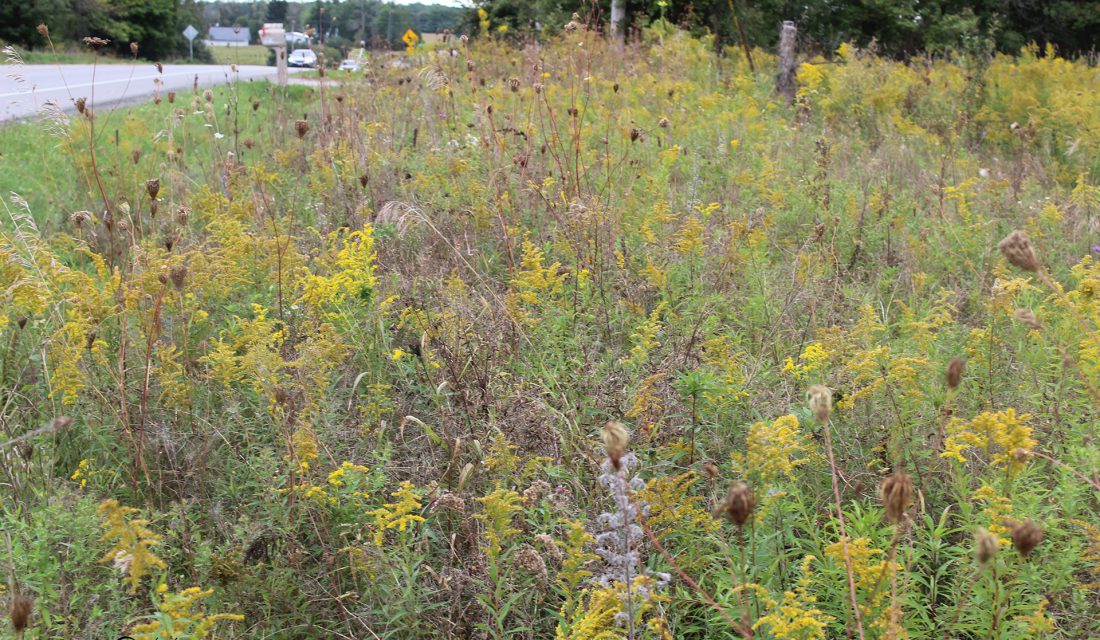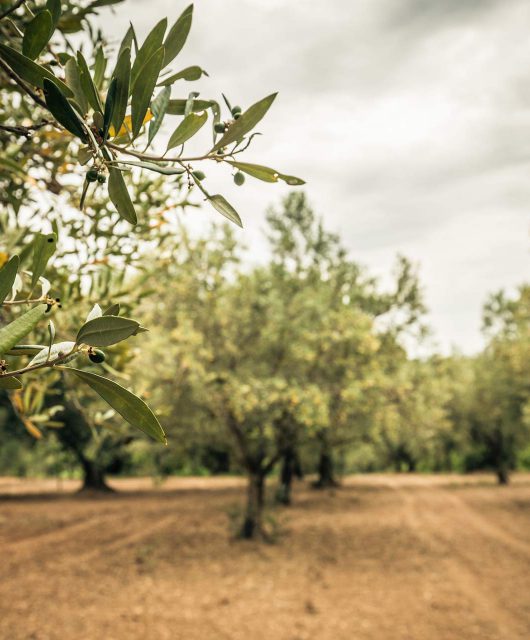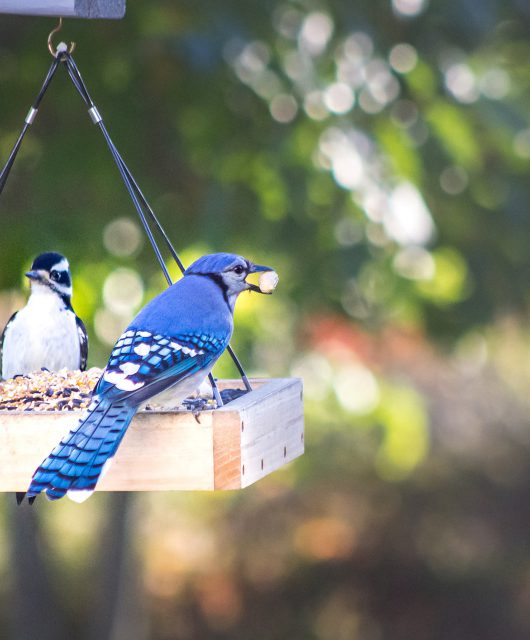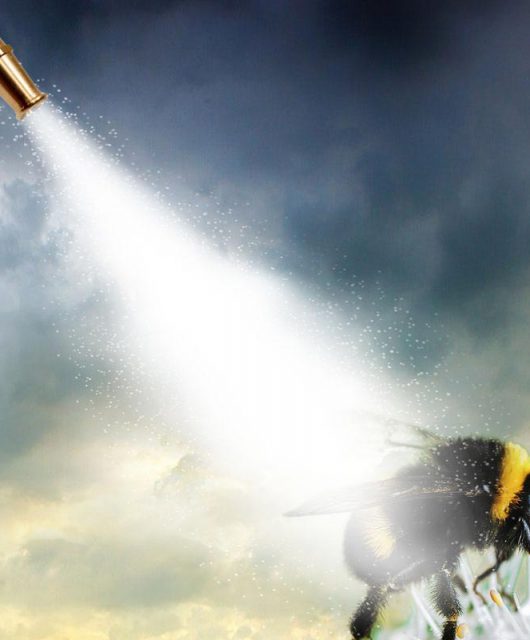It’s fall! That means it’s time to revisit the use of mycorrhizae in our fall roadside plantings.
In our Rights-of-Way as Habitat Networks project, the Canadian Wildlife Federation (CWF) is creating nectaring and breeding habitat for Monarch Butterflies — an umbrella species for our native pollinators. CWF partners with rights-of-way managers along the Eastern Monarch migratory path to both actively and passively restore native wildflower meadows.
To facilitate these plantings, we decided to test the use of a mycorrhizae product called Mycobloom. What is mycorrhizae? It is a granular product added to seed mix and applied to the prepared soil bed. A light raking over top of the planted seeds is all that is needed to help them flourish.
The site was then left for the winter. Many of our native species need a period of cold moist stratification, where the seed experiences freezing, thawing and a gradual dissolving of the seed coat to germinate. We expect the growth of these native species to follow the pattern of sleep, creep and leap over the next three years. This means that we do not expect to see many of the seeded plants growing above ground till at least the second and third year. We often see Brown-eyed Susan (Rudbeckia serotina) in the first year, so we know something is growing.
The fall of 2024 marked two years since we put seed and mycorrhizae down. We had two plots at the same roadside — one with mycorrhizae and one without. The seed mix and soil conditions were the same, so we have nice treated and untreated control areas to compare differences.
So, how did it do?
Back in July 2024, it appeared that Lance-leaved Aster (Symphyotricum lanceolatus) was growing on the treated plot and goldenrod species (Solidago canadensis and S. altissima) were growing on the untreated section. However, most of our goldenrod and aster species are not in full bloom until September. This visit in September, I could see the flowers and noticed that, in fact, the aster was dominating the treated site. The goldenrods were stronger on the untreated section.
This was striking, indeed. Goldenrod species are extremely important to pollinators in the fall. But in eastern Ontario, we have an abundance of goldenrod and they can sometimes become too dominant. Some people even call them ‘aggressive’ in certain situations.
Mycobloom Favours Native Species
Research on the Mycobloom suggests that it favours native species and allows for more diversity of species at a restoration site. Our roadside test shows early evidence of that occurrence. There was certainly a variety of other species found on both plots, including:
- Brown-eyed Susan
- New England Aster (Symphyotrichum nova-anglae)
- Bergamot (Monarda fistulosa)
- Flat-topped Aster (Doellingeria umbellate)
- Grass-leaved Aster (Euthamia graminifolia)
There were a number of undesirables in there, too, such as:
- Bedstraw (Galium aparine)
- Queen Anne’s Lace (Daucus carota)
- Dock (Rumex crispus)
However, there wasn’t Canada Thistle (Cirsium arvense) nor Wild Parsnip (Pastinaca sativa), which is a bonus. But, there were a few individual Bull Thistles (Cirsium vulgare) and some Purple Loosestrife (Lythrum salicaria).
Suppression of Non-weedy Species
The other suggested benefit of the mycorrhizae product is the suppression of non-native weedy species. In a restoration project, a lot of resources go into controlling weeds, so this is a real benefit.
Another benefit was the abundance of bumblebees all over the flowers. It was quite amazing to watch. This time of year, they are madly collecting pollen to take back to their over-wintering nests.
We will continue to watch and document the changes at this site going into year three, spring summer and fall. This will help us decide if the use of this amendment is worth the cost and effort. So far so good!
What does our partner from Lanark County think so far?
“We are pleased to see the mycorrhizae doing well in promoting the native plant species and with fewer weed species. The results for year two are promising and we are looking forward to seeing the full effect next year. Roadsides tend to be weedy so mycorrhizae will be an excellent tool to use for future roadside restoration projects.”
~Michelle Rabbetts, Climate Environmental Coordinator, Lanark County
Thanks to Lanark County and the Ontario Trillium Foundation.

